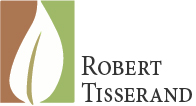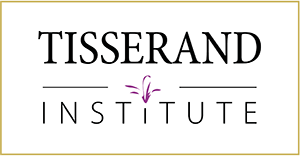One of the reasons given for supporting the Colorado bill was that the targeted ingredients are more stringently restricted in Europe than in the USA. It’s true that the FDA has prohibited only 9 substances as cosmetic ingredients, compared to 1,233 currently prohibited in Europe. Well, clearly “no contest” in the legal stringency stakes. But, the great majority of the 1,233 are petroleum derivatives, and many are pharmaceutical drugs, industrial solvents, or poisons such as curare, strychnine and arsenic – you can read the full list here. Very few of them would ever be considered as cosmetic ingredients, unless your idea of a totally yummy facial cleanser includes aircraft fuel with a soupcon of antibiotics and a touch of TNT. Should the same substances be prohibited in cosmetics in the USA? It’s a good question, but remember that most potential cosmetic ingredients are already regulated in the USA too. Not prohibited, but controlled to specific maximum levels.
There is an assumption that safety legislation passed in Europe is somehow intrinsically right, of a higher standard, and deserving of our close attention. Some of it may indeed be, but the general assumption is misplaced. The bill that has created the most anguish, controversy and chaos –
 in Europe – concerns allergens. It is regarded with skepticism by some dermatologists, and its scientific basis is seriously flawed, as I will explain momentarily. There is no evidence so far that it has done anything to reduce adverse reactions to cosmetics, but it has negatively affected essential oil production and availability. Many suspect that it has spurred the larger fragrance manufacturers to turn to alternative synthetic materials that have not been subject to such stringent safety testing. Even in Europe, fragrance ingredients do not have to be listed.
in Europe – concerns allergens. It is regarded with skepticism by some dermatologists, and its scientific basis is seriously flawed, as I will explain momentarily. There is no evidence so far that it has done anything to reduce adverse reactions to cosmetics, but it has negatively affected essential oil production and availability. Many suspect that it has spurred the larger fragrance manufacturers to turn to alternative synthetic materials that have not been subject to such stringent safety testing. Even in Europe, fragrance ingredients do not have to be listed.
Linalool is one of the 26 fragrance materials listed as an allergen in the European Union. If present in a cosmetic product at over 100 ppm (0.01%) in a wash-off product or 10 ppm (0.001%) in a leave-on product, linalool must be declared on the ingredient list if sold in an EU member state. Doesn’t sound too bad, does it? The problem is, neither manufacturers nor retailers want to get sued, or branded as selling unsafe products, and most retailers will only carry cosmetics that have passed an independent safety assessment, which is almost entirely based on looking at the levels of “allergens”. So the de facto result is that very few manufacturers take the risk of having a “known allergen” in a product at over the declarable amount.
Linalool is a major constituent of ho wood, ho leaf, rosewood, coriander seed, neroli, lavender, lavandin, bergamot, ylang-ylang, clary sage and petitgrain, and is found in some 200 other essential oils. But the really strange part is, linalool is not a high-risk allergen. In fact, it’s superlatively safe on the skin. Between 1969 and 2007 (38 years), a total of thirteen dermatitis patients out of the 25,164 tested, (0.05%) were allergic to linalool when patch tested, and less than this actually had allergic reactions to products containing linalool. Yes, 0.05% is more than zero, but it’s pretty close to the 0.03% reaction rate for petrolatum, the least dermally allergenic substance known to mankind. One way of looking at this is that adding linalool to a product increases risk by about 0.02%. That’s probably less than almost any other known cosmetic ingredient.
So why did the EU list linalool as an allergen? Because – according to their own report – five dermatitis patients had allergic reactions to it over a five-year period on patch testing, and at the time, their criteria for listing a substance included two or more reports of allergic reaction. Incredible, but true. Considering that linalool is (or at least used to be) one of the most commonly-occurring fragrance materials, an average of one reported reaction per year, on planet earth, is about a negligible as it is possible to get.
So, I’m just saying… if you think European safety regulations are a shining example of how things should be done, I suggest you re-consider. This one, at least, has been a massively expensive and largely misdirected fiasco.


That’s interesting Robert. There is also literature that finds linalool to be an anti-carcinogen.
You’ve provided a rational and articulate response to those who would blindly follow the EU and their heavy-handed banning. People here in Maine have been holding up that “thousands vs. ten banned” comparison, the assumption being that Europeans have safer products. Throwing everything out — the good with the bad — doesn’t mean that they are safer. It’s a hard thing to communicate once people have made that assumption. Thank you for explaining this so well.
creative idea to show how silly the europaean regulation of cosmetic ingredients is, to compare it to petrolatum! fits well to my purchase done yesterday: i bought the organic lavender, mint and aloe refreshing gel from your company. thank your for this adress, i hadn’t been aware of this website/blog. regards from europe/ireland eliane
That’s the kind of information we need to know on the EU continent!
Thank you for addressing these confusing issues. You said “remember that most potential cosmetic ingredients are already regulated in the USA too. Not prohibited, but controlled to specific maximum levels.”
The issue is education. Ask 100 small, independent crafters making aromatherapy lotions what the specific maximum levels are for each of their ingredients…I guarantee you…few if any even know what you are talking about.
I personally don’t think we need a lot of new laws for cosmetics, but it sure would be nice if the FDA actually followed up on the laws that are already there.
Now a question, do you believe any of the 26 fragrance materials listed as an allergen in the European Union should be listed on product labels for consumer’s benefit? I ask, because I won’t buy ANY product that lists just “fragrance” on the label. If the product says fragrance, I assume it’s synthetic fragrance and I avoid them for both health and environmental reasons. If a product says something general like “scented with only essential oils”…I still won’t buy the product unless the EOs are specifically listed, because I am extremely allergic to lemongrass.
So I don’t have a problem with regulations that are “information” based. But listing a fragrance component on a label is different from making the use of that ingredient illegal, as the Colorado Bill would have done.
Of the 26 fragrance materials, I have only studied the 16 that are also essential oil constituents. Of these 16, the most allergenic are cinnamaldehyde, isoeugenol and farnesol. Oakmoss and treemoss absolutes are also problematic. Should these be listed on product labels?
Well, you would have to stipulate what level would trigger a labeling requirement. You would also have to be prepared for the inevitable consequence – an apparently simple labeling requirement in Europe has caused what could reasonably be described as mass panic, as many manufacturers re-formulated, so they would not have to declare any of the “allergens” on their products. Sounds good, but some of the synthetic alternatives now used are equally allergenic, but are not restricted! And, the labeling requirement, as I mentioned before, has become a de-facto safety regulation.
Another approach would be to require all fragrance ingredients to be listed. It raises some new problems, but it could be done.
There is no evidence that I am aware of that synthetic fragrances are, as a group, more skin-reactive than essential oils, though there is much anecdotal evidence that synthetics are more likely to cause respiratory symptoms in sensitive individuals. At present, this issue is not being addressed by any regulatory agency, though it may be fair to say that those who are sensitive know to avoid highly fragranced products.
Thank you for this interesting blog and all the information on your website. I found it through Elianes blog. Best wishes from Cologne, Germany. Soham
Thanks for the great article!